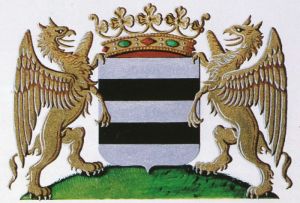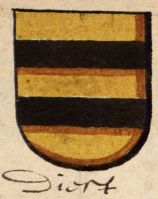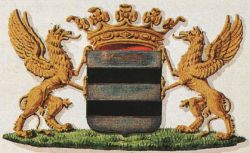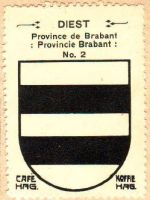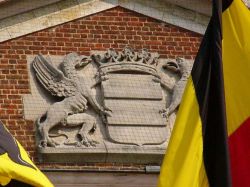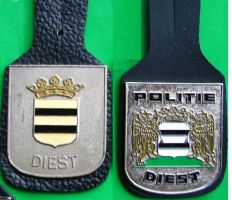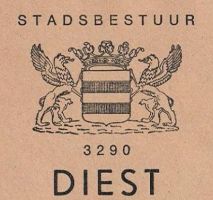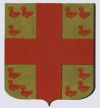Diest: Difference between revisions
Knorrepoes (talk | contribs) No edit summary |
Knorrepoes (talk | contribs) m (Text replacement - "<center>''' {{uc:{{PAGENAME}}}} '''</center><br>↵<br>'''Country''' : Belgium " to "<center>''' {{uc:{{PAGENAME}}}} '''</center><br> '''Country''' : Belgium ") |
||
| Line 4: | Line 4: | ||
| | | | ||
<center>''' {{uc:{{PAGENAME}}}} '''</center><br> | <center>''' {{uc:{{PAGENAME}}}} '''</center><br> | ||
'''Country''' : Belgium [[File:Belgium.jpg|60 px|right]]<br><br><br> | |||
'''Province''' : <br>[[Vlaams-Brabant]][[File:Vlaamsbrabant.jpg|60 px|right]]<br><br> | '''Province''' : <br>[[Vlaams-Brabant]][[File:Vlaamsbrabant.jpg|60 px|right]]<br><br> | ||
'''Additions :''' | '''Additions :''' | ||
Revision as of 05:43, 22 July 2023
|
Country : Belgium Province : Vlaams-Brabant Additions :
|
| Dutch |
|
| English | blazon wanted |
Origin/meaning
The arms were granted on January 21, 1824 and confirmed on February 26, 1846 and again on March 11, 1986.
The arms are derived from the oldest Lords of Diest, known since the 13th century. The original arms were two black bars in a golden field, but in the 16th century the colour of the shield was changed into silver.
The oldest seal of Diest is known from 1249 and shows a tower flanked by two smaller towers. The next seal, probably dating from the early 14th century, shows the same composition, but now with the addition of a small shield with the arms of the Lords of Diest. The smaller contra-seal only shows the shield with the bars. Ever since the city has used the two bars as its arms.
The city council decided in 1809 during the French occupation, following general instructions about how municipalities could apply for arms, to ask for the grant of their old arms. The sub-prefect approved, the prefect approved, the head of municipal accounting at the ministry of the interior approved, and the next step was to petition the Conseil du Sceau in Paris. A letter was send in 1811, but no answer was ever received. The town thus not was granted during the French time.
After the Dutch independence municipalities were asked in 1814 to register their arms, which many did. The mayor of Diest asked first in 1817 for the fee, as the application of 1811 would have costed 800 Francs. As Diest had less as 5000 inhabitants there was no fee. The municipality thus decided in November 1823 (...) to apply for arms, sending the municipal stamp for the design. However, the mayor indicated that the French text (see image below) had to be translated as Plaatselijk Bestuur van Diest (Zuid Braband). These arms were granted in 1824, but without any texts.
The arms in a 17th century manuscript
The arms in the Koffie Hag/Café Hag albums +/- 1930
The arms on the city hall(source)
The arms on a police badge (source)
The arms on a Dutch Willem II cigar band
Literature: Servais, 1955
This page is part of the Belgium heraldry portal/ Belgische overheidswapens/ Armorial de Belgique
|
|
